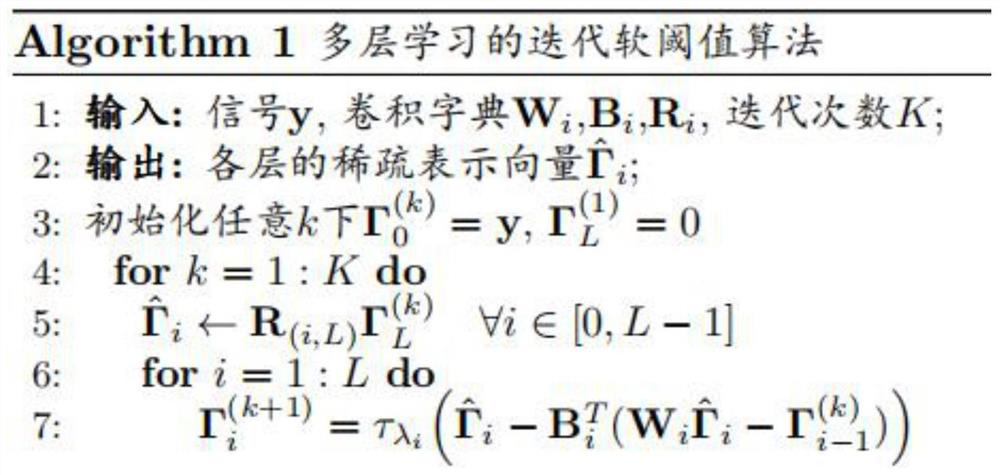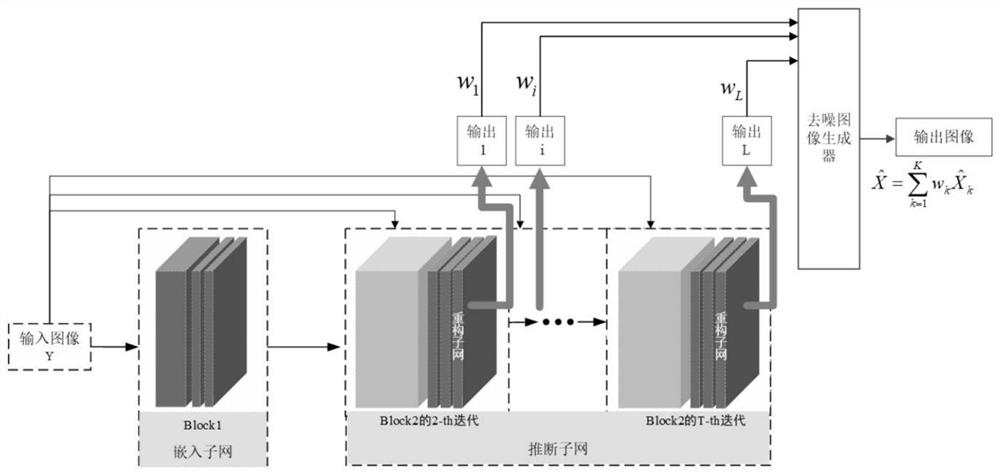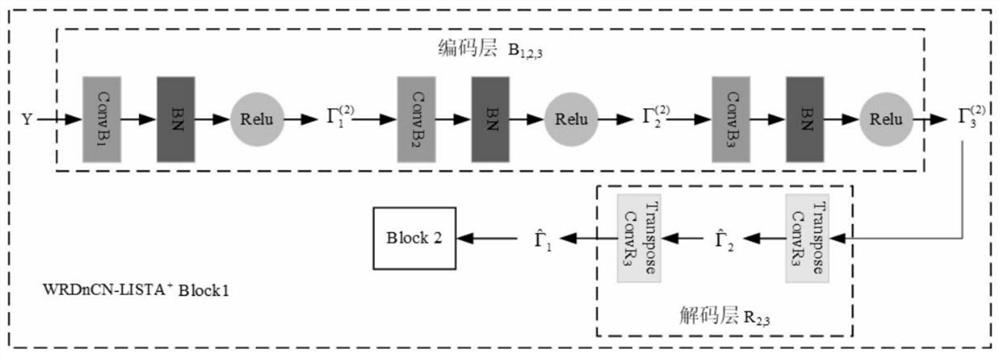Weighted recursive denoising deep neural network and method for multilayer convolution sparse coding
A convolutional sparse coding and deep neural network technology, applied in the field of image processing, can solve the problems of gradient disappearance, difficulty in recursive network, difficulty in learning distance pixels, etc., to avoid errors and avoid too few recursion times.
- Summary
- Abstract
- Description
- Claims
- Application Information
AI Technical Summary
Problems solved by technology
Method used
Image
Examples
Embodiment Construction
[0039] The description and claims do not use the difference in name as a way to distinguish components, but use the difference in function of the components as a criterion for distinguishing. As mentioned throughout the specification and claims, "including" is an open-ended term and should be interpreted as "including but not limited to". "Approximately" means that within an acceptable error range, those skilled in the art can solve the technical problem within a certain error range, and basically achieve the technical effect.
[0040] Orientation terms such as up and down, left and right in this description and the claims are combined with the accompanying drawings for the convenience of further description, making the application more convenient to understand, and do not limit the application. Relatively speaking.
[0041] The present invention will be further described in detail below with reference to the accompanying drawings.
[0042] Multilayer Convolutional Sparse Co...
PUM
 Login to View More
Login to View More Abstract
Description
Claims
Application Information
 Login to View More
Login to View More - R&D
- Intellectual Property
- Life Sciences
- Materials
- Tech Scout
- Unparalleled Data Quality
- Higher Quality Content
- 60% Fewer Hallucinations
Browse by: Latest US Patents, China's latest patents, Technical Efficacy Thesaurus, Application Domain, Technology Topic, Popular Technical Reports.
© 2025 PatSnap. All rights reserved.Legal|Privacy policy|Modern Slavery Act Transparency Statement|Sitemap|About US| Contact US: help@patsnap.com



